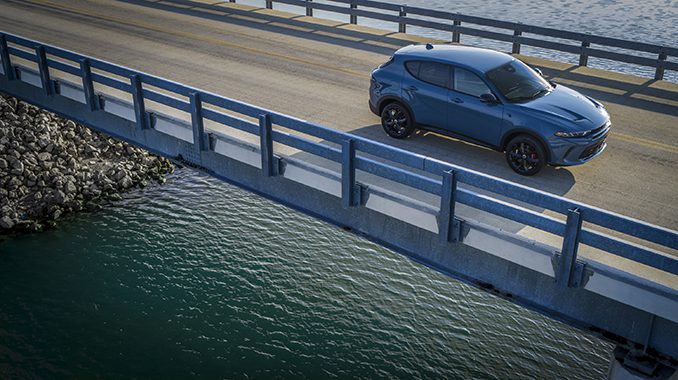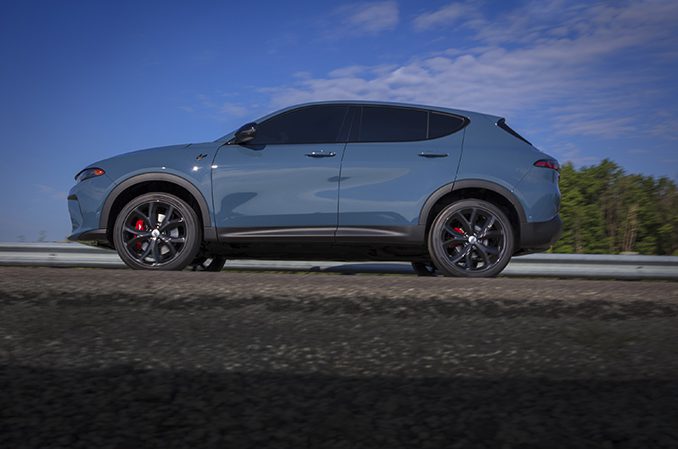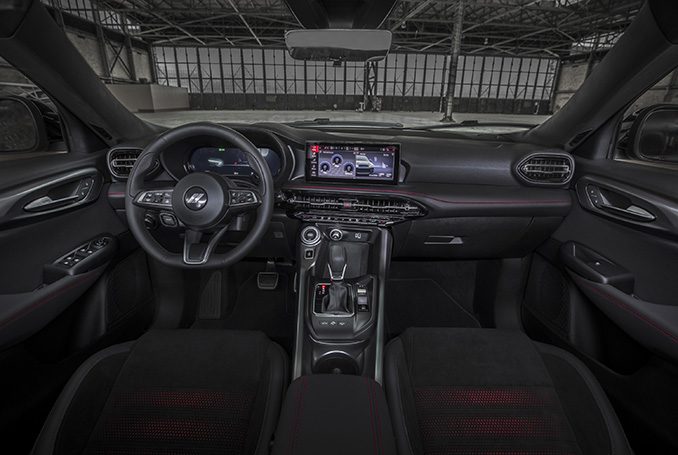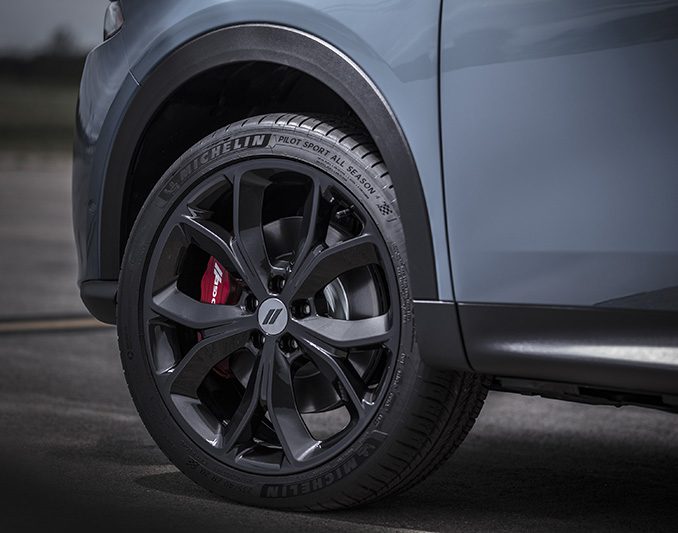

ASHEVILLE — Over the past decade or so, Dodge has gone from being a full-line automotive brand — IE, one that has vehicles across just about every major category — to a total of three vehicles: The Charger, the Challenger, and the Durango.
Gone are the esteemed Caravan (which invented the minivan segment, remember), the Viper, Dakota, the RAM pickups, and the much-maligned Journey. It’s probably a good thing, though, as it’s hard to imagine Dodge’s V8-infused “Brotherhood of Muscle” marketing slogan being applied to a mom-mobile like the Grand Caravan (as fun as a 707-horsepower van would be).
That branding strategy is part of why the new Dodge Hornet is interesting. It’s a compact utility vehicle competing with CUVs like the Toyota RAV4 and Honda CR-V, but Dodge is leaning hard into the whole Muscle Crossover concept.

The press release announcing the Hornet notes that the entry-level Hornet is the “quickest, fastest, most powerful utility vehicle under $30,000 (excluding destination).” Leaving aside the fact that excluding the mandatory $1,595 destination charge is absurd and the actual starting price is just shy of $31,600, is being the quickest and fastest vehicle starting under $30k a selling point, especially when almost none of the cars will ship in that stripped configuration? Anyway.
The Hornet started life as the Italian-designed, and Italian-built Alfa Romeo Tonale, a luxury crossover meant to really, truly, we-mean-it-this-time-for-real allow Alfa to compete with the Lexus and BMW, and Mercedes-Benzes of the world. It feels like an Alfa inside. Other than some trim components around the middle of the instrument panel and the dash cluster and infotainment screens, it is an Alfa inside.
Dodge made much of its tweaks, showing how the driver-focused cabin design is replicated from the other cars in the Dodge lineup, and that’s great. Still, company reps could not point to any performance features or hardware on the Hornet that didn’t come wholesale from the Tonale — though the car was “tuned” by the boys in Detroit, it’s still assembled in Italy. Frankly, it was all a bit confusing that Dodge reps barely wanted to acknowledge that the Tonale was even a thing when journalists gathered for the Hornet’s first drive event in Asheville.

It’s a weird rivalry between the various branches of the enormous Stellantis tree. But it’s good news for American consumers. By stripping out some of the lux bits, Dodge can lower the price and offer fundamentally the same vehicle, all presumably paid for out of Alfa’s R&D budget. As a result, it should be quite a good value for money. Ultimately, Stellantis R&D money is the same regardless of which brand spends it, but internal international geopolitics complicates the concept considerably.
It’s a sporty drive, which makes sense when you remember it was designed to be a sporty luxury SUV. The seats are supportive and comfortably bolstering, the steering is sharp and responsive, and the suspension supposedly tuned by Dodge remains firmly European — that is, firmly firm.

The exterior design has been tweaked with new lighting front and rear, and a new illuminated Dodge double rhombi logo sits in the middle of the full-width rear taillamp. As a fun tease, a Hornet logo emblazons the front quarter panel just behind the front wheels. The overall design is lovely, standing out in a crowded, somewhat staid segment.
Under the hood of the Hornet GT is a zippy 268 horsepower, 295 torque 2.0-liter turbocharged 4-cylinder that can zip from 0-60 mph in 6.5 seconds — it’s the quickest, fastest, most powerful utility vehicle under $30,000 excluding destination, remember — paired with a terrific nine-speed transmission that goes unnoticed in the best way.
More interesting is the Hornet R/T, which arrives for the 2024 model year, but we were able to drive a bit early. Both GT and R/T have standard all-wheel drive, but for an extra $10,000 or so, the R/T swaps in a 1.3-liter turbo four-cylinder on the front axle and an electric motor on the rear. It’s linked to a 15.5-kWh lithium-ion battery to create a plug-in hybrid powertrain good for 30 miles of all-electric range and a boost to both horsepower and 0-60 time some 1.5 seconds faster when you engage the new “PowerShot” feature that boosts horsepower for 30 seconds by increasing the output of the electric drive temporarily.
Annoyingly, the PHEV isn’t available until late this year and, since the Hornet is assembled in Italy, is not eligible for any federal electric vehicle tax credit. Still, the Dodge Hornet is an exciting entrant to the CUV space. I suspect more than a few folks will eye it because it’s a bit different from the other crossovers on the market, and the Muscle Brotherhood marketing angle is rather clever.
The internal combustion Dodge Hornet GT is available now.



